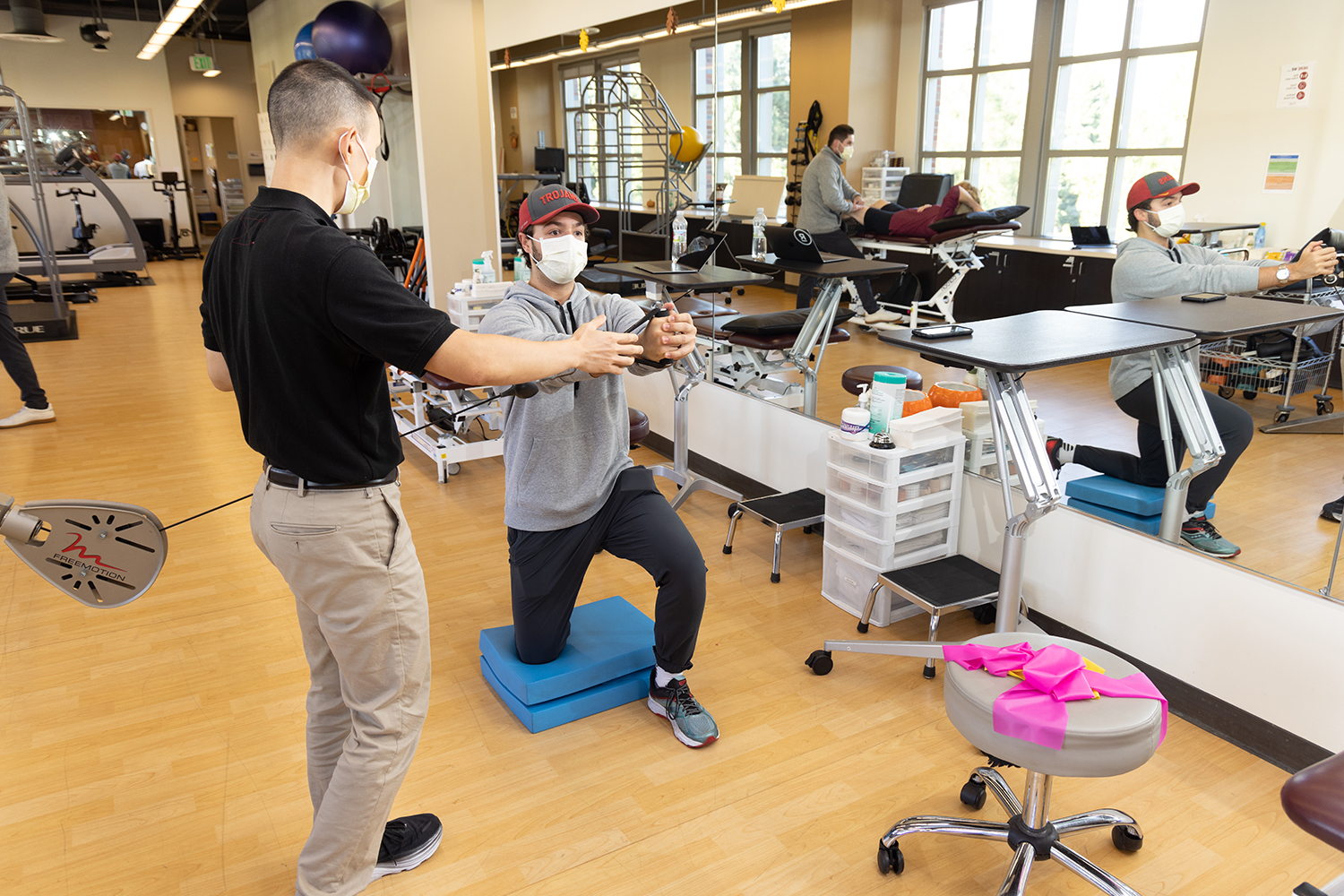07.13.2023
By uscbknpt
USC’s Upper Extremity Athlete Fellowship Receives ABPTRFE Accreditation

USC joins just one other university across the nation to provide such a program.
BY ANDREW FAUGHT
USC’S UPPER EXTREMITY ATHLETE PHYSICAL THERAPY FELLOWSHIP has been accredited by the American Board of Physical Therapy Residency and Fellowship Education (ABPTRFE), making it one of only five programs across the nation to be certified by the national accrediting board.
The ABPTRFE accredits programs that have demonstrated a commitment to educational standards and ethical business practices indicative of quality, accountability and continuous improvement that enhances the physical therapy profession.
In receiving the five-year accreditation, the program — a collaboration with Major League Baseball’s San Diego Padres — joins the Ohio State University as the nation’s only the second university-based accredited upper extremity fellowship program.
“Accreditation ensures that any future employer or potential collaborator will know that the fellow has completed a program that has undergone rigorous scrutiny,” said Jonathan Sum ’01, DPT ’05, fellowship program director and associate professor of clinical physical therapy.
The accreditation review process took 18 months and included facility tours, interviews and observations.
A Substantial Need
Launched in 2019, the year-long fellowship is targeted to licensed physical therapists. It offers one person per year subspecialty training and experiences that will prepare them to care for athletes — primarily baseball players — who rely on overhead arm motion.
Upper extremity injuries in baseball players are “a persistent and significant problem … and injury rates are increasing,” according to research published in the Journal of Athletic Training. Sum says he created the fellowship in response to the continual rise in upper extremity injuries, many of which are taking longer to recover. The increase in the prevalence of injuries is partially due to modern players throwing harder, faster and more often.
“It’s more important than ever to get athletes back into playing shape and able to perform on the field,” Sum said. “There’s a pretty substantial need for these highly trained, highly experienced specialized physical therapists working with this unique patient population.”
During the program’s first six months, the fellow treats patients at the USC Physical Therapy faculty practice in Los Angeles while assisting USC baseball players and local youth athletes. Expert faculty clinicians from USC mentor the fellow.
The fellow spends the second half at the Padres’ team complex in Peoria, Ariz., where they work with major leaguers and prospects alike, including athletes rehabilitating from and injury such as rotator cuff tendinopathy of the shoulder or recovering from Tommy John surgery of the elbow.
The Most Unique Experience
The current fellow is Alan Ng, a former high school catcher who was hobbled during his playing days: He required physical therapy after tearing the posterior cruciate ligament in his knee. That helped fuel his passion to become a physical therapist. After earning a doctor of physical therapy from New York University, Ng has spent the past seven years treating patients in New York and Southern California.
The USC fellowship, he said, “is by far the most unique experience I’ve ever been part of.”
“I’ve definitely taken the initiative to take on as many elbow cases as I can, just for the learning opportunity,” he added. “Elbow injuries are pretty rare to see in a clinic setting.”
He’s worked with players recovering from Tommy John surgery, which reconstructs the ulnar collateral ligament. Recovery time is nine months to a year. “You’re making sure the wound is healing, and you’re keeping them doing gentle stuff for the first six weeks,” Ng said. “And then progressively we’ll have them do strengthening and prepare them to start throwing.”
Must Love Baseball
Ng is the second fellow to complete the effort; COVID-19 curtailed earlier fellowships. As part of their partnership, USC and the Padres share the responsibility of the fellow’s employment. Ng says the team is letting him stay on through the end of the calendar year, after the fellowship formally ends in July.
He’ll ultimately look for work, potentially in Major League Baseball, Minor League Baseball, international leagues or at the collegiate level.
Fellows are chosen not only for their physical therapy skills. They also must have a passion for baseball and a willingness “to interact with individuals up and down the organization, beyond the player,” Sum said. That includes the front office, the sports medicine team, performance coaches and the sports science team.
“One of the unique things about the fellowship is they’re not just taking care of athletes,” Sum said. “They’re learning to function within a professional organization. They’re actually understanding all of the inner workings and processes that go into running a professional baseball organization.”
Added Ng: “I’ve built a lot of strong relationships here, both from the medical standpoint and throughout the organization. It takes a big team of people to make the engine run. I’m hoping that makes me more attractive to potential employers.”

